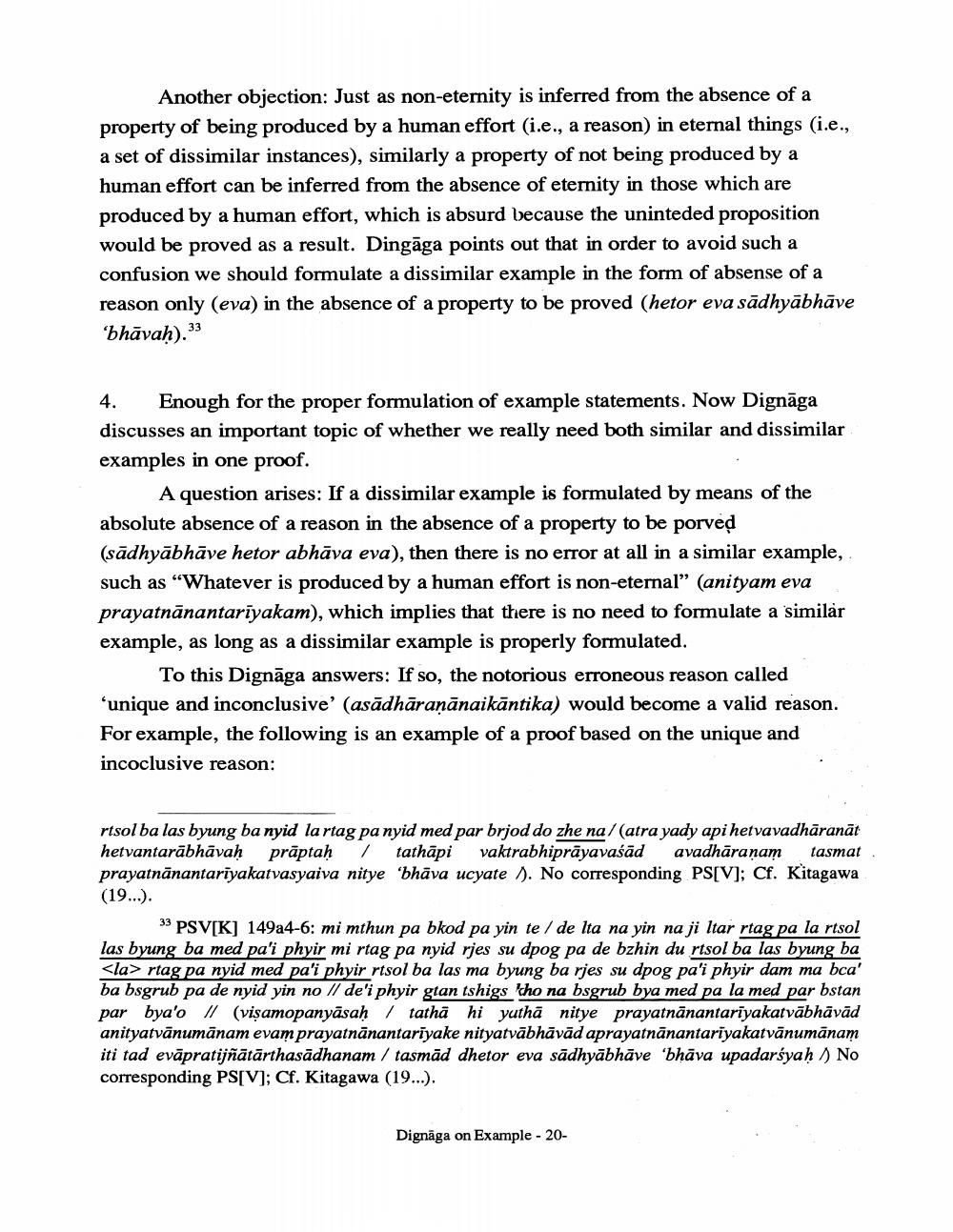Book Title: Role Of Drstanta Indignagas Logic Author(s): Shoryu Katsura Publisher: Shoryu KatsuraPage 20
________________ Another objection: Just as non-eternity is inferred from the absence of a property of being produced by a human effort (i.e., a reason) in eternal things (i.e., a set of dissimilar instances), similarly a property of not being produced by a human effort can be inferred from the absence of eternity in those which are produced by a human effort, which is absurd because the uninteded proposition would be proved as a result. Dingāga points out that in order to avoid such a confusion we should formulate a dissimilar example in the form of absense of a reason only (eva) in the absence of a property to be proved (hetor eva sādhyābhāve 'bhāvah).33 4. Enough for the proper formulation of example statements. Now Dignāga discusses an important topic of whether we really need both similar and dissimilar examples in one proof. A question arises: If a dissimilar example is formulated by means of the absolute absence of a reason in the absence of a property to be porved (sādhyābhāve hetor abhāva eva), then there is no error at all in a similar example, such as “Whatever is produced by a human effort is non-eternal” (anityam eva prayatnānantarīyakam), which implies that there is no need to formulate a similar example, as long as a dissimilar example is properly formulated. To this Dignāga answers: If so, the notorious erroneous reason called ‘unique and inconclusive' (asādhāraṇānaikāntika) would become a valid reason. For example, the following is an example of a proof based on the unique and incoclusive reason: rtsol ba las byung ba nyid la rtag pa nyid med par brjod do zhe na/(atra yady api hetvavadhāranāt hetvantarābhāvah prāptah / tathāpi vaktrabhiprāyavaśādavadhāranam tasmat prayatnānantarīyakatvasyaiva nitye 'bhāva ucyate ). No corresponding PS[V]; Cf. Kitagawa (19...). 33 PSV[K] 149a4-6: mi mthun pa bkod pa yin te / de lta na yin na ji ltar rtag pa la rtsol las byung ba med pa'i phyir mi rtag pa nyid rjes su dpog pa de bzhin du rtsol ba las byung ba <la> rtag pa nyid med pa'i phyir rtsol ba las ma byung ba rjes su dpog pa'i phyir dam ma bca' ba bsgrub pa de nyid yin no // de'i phyir gtan tshigs tho na bsgrub bya med pa la med par bstan par bya'o // (visamopanyāsah / tathā hi yuthā nitye prayatnānantarīyakatvābhāvād anityatvānumānam evam prayatnānantarīyake nityatvābhāvād aprayatnānantariyakatvānumānam iti tad evāpratijñātārthasādhanam / tasmād dhetor eva sādhyābhāve 'bhāva upadarsyah / No corresponding PS[V]; Cf. Kitagawa (19...). Dignāga on Example - 20Page Navigation
1 ... 18 19 20 21 22 23 24
